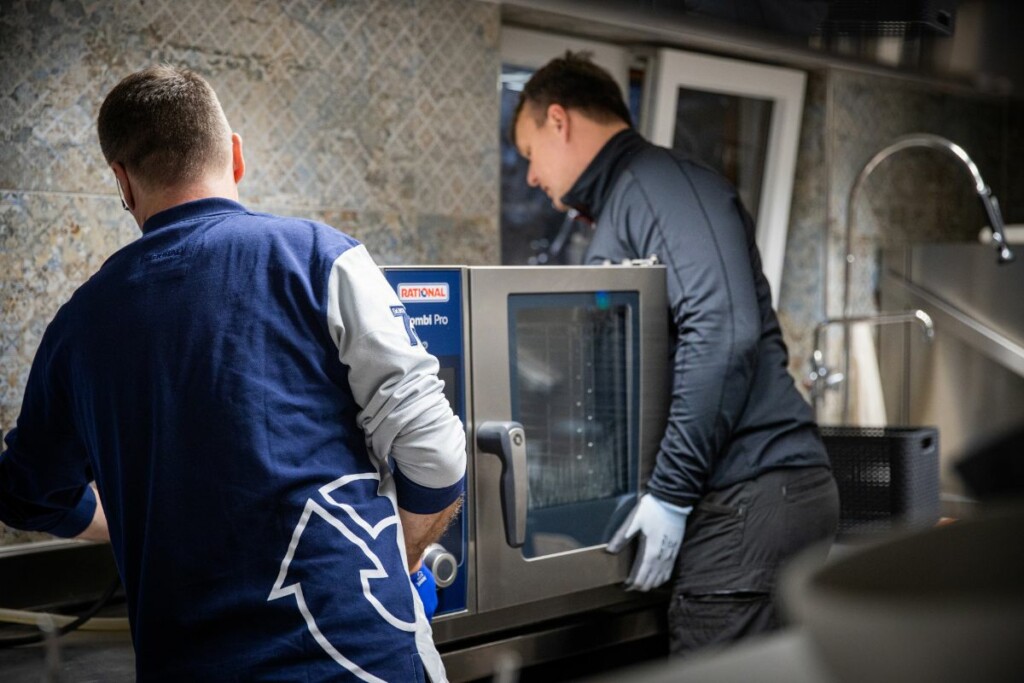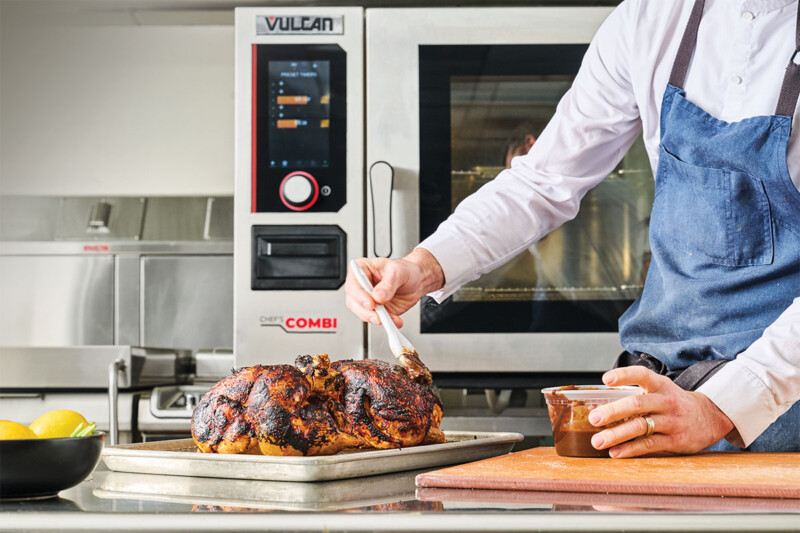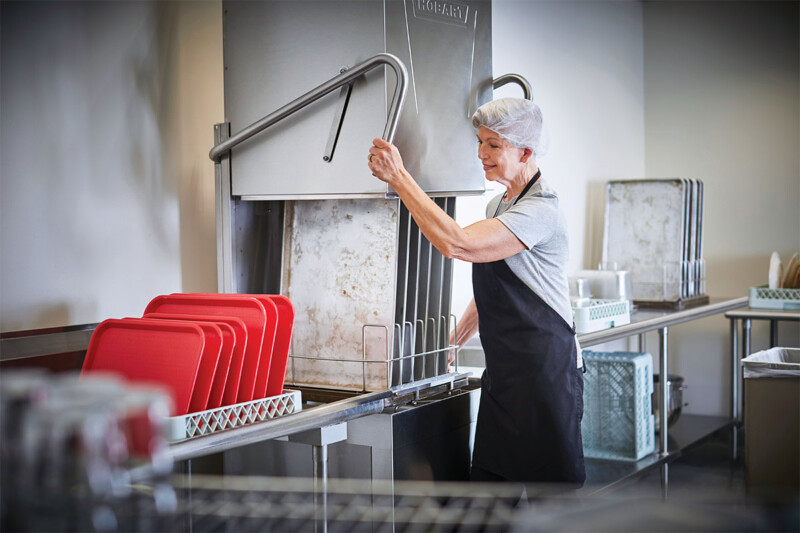SPONSORED CONTENT
How to prepare for a combi oven installation
Follow these tips and tricks—plus pitfalls to avoid—from an experienced technician.

Adding a RATIONAL combi oven to your line can be a game changer when it comes to efficiency in the kitchen. “But if you don’t properly prepare, you can end up with an incompatible setup that you’re unable to use or install,” says Zachary Howard, a technician with the Baltimore branch of commercial kitchen parts and service provider EMR. To make sure you don’t waste time or money in the process, Howard is here to break down how to prepare for a combi oven install and avoid common mishaps he’s seen in the field.
Space & Clearances
Finding out the new sofa you just bought doesn’t fit through your home’s front door is a crushing oversight—and you don’t want to make the same mistake with your combi oven. “It may not actually fit in the site—I’ve come across that a couple times, when the door is half the size of the unit and they’re asking you how you’re going to get it in there,” Howard says. “Well, in that case I’m either going to take it back or it’s going to sit here in front of your restaurant. Then you end up paying a restocking fee to send the unit back and get the proper unit.”
Ensuring proper spacing between your combi oven and other equipment also is crucial. “On the specification form, they’ll tell you the required clearances for the unit, and a lot of times they’re not abided by,” Howard says. Placing a combi oven too close to a fryer or a range, for example, can set you up for problems in the future. “You can overheat the controls and the electrical components in that case,” Howard says. “With a fryer, grease can get inside the control compartment, which can cause issues.”
Thinking ahead to future repairs, having a minimum of 18 inches of clearance around the unit is key. “Someone might be installing a unit up against the wall, and we are never going to be able to service that unit,” Howard says. “If there’s no clearance to work on that unit and it goes down during a busy time, then there’s no space for you to pull it out and work on it when the line is busy. You have to wait until the restaurant is closed, or service it in the early morning and it can end up being inconvenient for everyone.”
Water & Drainage
Making sure you have the required utility hookups in place can pave the way for a smoother install. Combi ovens require a cold water line within three feet of the unit, Howard says. And with the filter, there should be two water line connections and each should have an individual shut-off valve, he says.
Properly sized water hoses also are something to look out for. “A lot of people use washing machine hoses, which is a no-no, because the inner diameter is only 3/8 of an inch and the connection is 3/4,” Howard says.
Having a drain in the proper location also can make or break a combi install, Howard says. “A lot of times I’ll go to a site survey and the customer will have water and gas, but not a drain close by, which is the most important utility on that unit during an install.” A drain must be located within three feet of the unit, and not directly under it or where the legs of the unit are going to sit. “I’ve had a couple [installs] where the drain is in the front of the unit, and in that case it’s a tripping hazard,” he says.
Gas & Electricity
When it comes to electricity, you’ll need properly sized breakers to power the unit. If you don’t currently have sufficient capacity and hope to add it, Howard suggests bringing an electrician out to your site before you make your equipment purchase. “You might buy the unit and then say, ‘I can get the electricity work done,’ but then [the electrician] might take a look and say, ‘You don’t have capacity in your panel, so that’s not going to work.’” Howard says. “You’ll want to find that out prior to spending thousands on equipment to save everybody a headache.”
Depending on the model, you also may need a gas hookup within three feet of the rear of the unit. “You also should never reduce gas line size, so whatever the manufacturer specification is for your unit, make sure that you abide by that,” Howard says.
Explore the variety of sizes and specifications for the RATIONAL iCombi Pro and see which is right for your operation.
RELATED CONTENT
- Advertisement -
- Advertisement -
- Advertisement -
- Advertisement -
TRENDING NOW
- Advertisement -
- Advertisement -


